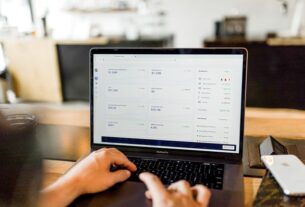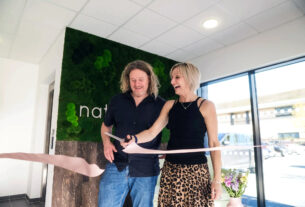The large US port is investing millions in a platform that will bring more visibility.
In a series of articles and interviews The Logistics Point is going to shed light over what Smart ports are. The first interview is with Christopher Chase, marketing manager at the Port of Los Angeles. He talks about how his team is creating a digital platform that will enable all stakeholders to communicate and plan better. Christopher also explains how the industry has evolved during the past two decades and what are the biggest obstacles that it faces.
READ: Excessive stock could choke the fashion industry
What is a ‘smart port’ and how will it improve the service you provide?
For us a Smart Port takes advantage of the digital transformation in the world and applies it to the core issues or operations, depending on what you need. The idea is to evolve with our customer’s base, prepare for what is next and be able to fight deficiencies within the supply chain that the digitisation maybe able to provide.
Our Smart Port project – Port Optimizer, is a visibility tool which we are working on with GE Transportation with the idea of sharing information in a common place amongst all supply chain stakeholders. Much of the information is available but it is not always easy to find and many people in the supply chain are not sharing it because there is no direct financial relationship. We are trying to promote efficiency in our port, utilise our physical infrastructure better and share information about the cargo coming in and out, its movements around the port with the appropriate stakeholders.
What deficiencies are you trying to solve?
There are big deficiencies that we have come across over the last number of years. There is so much cargo moving in such a high speed. Sharing data with people will improve planning. Most importantly sharing the information on one platform will stop them wasting time looking for it.
You really see the improvements as truckers are being more efficient; better planning on the pick-up or delivery cycles on containers to and from one of our port terminals.
We are currently working on getting the data once the cargo arrives at a terminal or a shipping line overseas. Ideally it would go as far as you could in the supply chain but at this point it is going to the pick-up. Right now it stops at the port facility but we are designing the system and working with our partners to do as much as can and we can always expand it in the future.
FREE: The Logistics Point Magazine April 2020
How are people going to be affected by all this?
We are trying to provide a system of systems. We are not changing anybody’s existing systems. We are just trying to be the link that allows those systems to talk to each other and share the appropriate information. Whatever people are doing today in their existing jobs doesn’t change. We are just putting the information that they put into the computer systems and we are linking it together. So this is a process that will drive deficiencies away and will enable better planning to allow people to do their jobs better. This system doesn’t change the way people operate we are just taking data that is already input and utilising it.
What investments are you going to put into the project?
GE Transportation responded to a public bid and we have been working on this for about three years. Our current contract goes out for another three years. It is about $15 million dollar contract. We view this kind of technology investment as similar to the hard infrastructure where we spend hundreds of millions of dollars.
We are an independent logistics media and like many others we are experiencing challenges in the current environment. If you like what you see and want to support us, why not subscribe for more news and our free magazine? You can do this HERE.
How can large and small ports deal with the challenges brought up by digitalisation?
I don’t think digitalisation looks at whether you are small or large. Ports around the world are doing different things and it just depends on what their needs are. A smaller port can have as much need for digitisation as a large port. And it is really just a question of what are they trying to solve and what they need to do. The biggest advantage is that small and large ports can talk to one another as they digitise and get the right information at the right time.
How is the role of ports changing in today’s insecure and volatile macroeconomic environment?
The ports are always in between a lot of things because we are a hand off point where you physically have to change your mode of transportation and in many cases the ownership of that cargo. If you look back there were always macro events affecting the industry. Right now it is some of the trade battles, number of years ago it was the economic downturn.
We are always dealing with weather and economic instabilities.
Today’s macroeconomic environment is an interesting situation. The US economy is strong. We have these issues for trade but we are still seeing very good volumes of cargo because we are a retail focus environment and retail business remains strong.
What are the biggest obstacles to growth for the industry?
For ports it is shifting manufacturing locations. As manufacturers move their supply chains around the world our volumes can go up and down. This is one of the reasons for pushing for digitalisation. We think it will help us be more competitive because we are making it a place customers want to bring their cargo to. Also if the growth of mature economies such as the US is going to keep pace with other parts of the world.
How can ports be part of the movement to protect the environment?
There has always been an environmental movement but I think it depends on what part of the environment we are talking about. Our part is to help unify ports as it is very hard when you have 400 ports around the world with different rules.
The IMO 2020 fuel change is a very helpful because everybody is playing from the same set of rules.
We don’t want to say that electric trucks are better than hydrogen trucks which are better than something else. We want to create a platform in which people work together. In Southern California cleaning the air is our biggest issue. For forty years we have been working on cleaning the water and that has been very successful. We try to lead the way and experiment with things. Some of that local effort has become national and international activity.
How would you say the industry has changed over the years?
Ten years ago Vietnam wasn’t even on our radar map and now it is our second or third source of cargo depending on the year. If you go back 25-30 years Japan was a leading trading partner and it still is but their volumes have changed and they are not growing the same way as places like China, Vietnam, Thailand and Indonesia are. We start seeing more manufacturing in places like Eastern Europe too.
Since I first started it has been a lot more cargo moving. Some amazing efficiencies have come about and that is probably the biggest change.Every day is something different, every year we are refining and changing how we do things.
**
Christopher Chase is Marketing Manager at the port of Los Angeles. He has 25 years of experience in the shipping industry with 18 of them at the port in the business development area where he interacts daily with customers. He also has experience in railroads, trucking industry, container terminals and container lines.
#portofLA #maritime #ChristopherChaze #smartport #logistics

